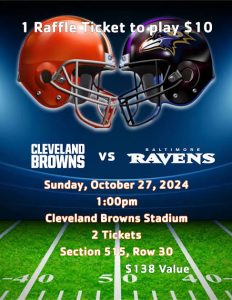

The Alliance of American Football has begun play this weekend, and while a large number of people have watched on television thus far, the league knows it still has a long way to go.
The AAF considers itself to be a sort of developmental league for the NFL and is not in direct competition with the NFL.
That seems like an excellent proposal, as there isn’t a real minor league system below NFL play. Many young players who have been released by NFL clubs may find employment in the league, which would offer them rungs on a ladder that they could use to possibly climb back up.
Although the Alliance is new, the idea of additional professional football leagues is not.
Aside from a plethora of real small and semi-pro leagues, my calculations place the AAF as the at least fourteenth league in the history of American football.
While some of those leagues did not last long enough to be documented, others tried their hand for a while before having to cash in what little of their remaining chips due to financial constraints.
As many fans are aware, this year marks not only the 100th anniversary of the NFL but also the 60th anniversary of the Denver Broncos and the American Football League.
The American Football League (AFL) was the only sports league in history to have all of its franchises absorbed by and remain active in the larger league. The AFL was so successful that it forced a merger with the National Football League (NFL).
Ten of the current 32 NFL teams, including the Broncos, were once members of the AFL.
There was another AFL in addition to the one we know and love, which operated from 1960 until 1969.
Before the most recent, there were actually three American Football Leagues.
The New York Yankees, Chicago Bulls, Los Angeles Wildcats, and Chicago Bulls were among the nine teams who participated in the inaugural AFL, which took place in 1926. After just one season, that league was dissolved, and the Yankees were actually taken up by the NFL.
Six clubs competed against the NFL during the two-year 1936–1937 season of the second AFL.
There was the New York Yankees franchise once more, but the league also featured the Cleveland Rams, the team that would eventually become the Los Angeles Rams. In reality, the Rams moved from Cleveland to Los Angeles to St. Louis before returning to Los Angeles to become the team that it is today.
The Boston Shamrocks and the Los Angeles Bulldogs, which were based in Los Angeles, were among the other teams. The NFL’s Boston Redskins were actually outdrawn by the Shamrocks in 1936, which prompted George Preston Marshall, the owner of the Redskins, to move his team to Washington, D.C.
But once more, at that time there was no television, and the AFL collapsed due to financial difficulties.

However, a third AFL was founded in 1940 and played for two seasons in 1940 and 1941 (apart from the NFL, the name “AFL” was just too logical and kept coming back).
This time, there were five teams, including the New York Yankees, of course. However, with the start of World War II and the ensuing military conscription, the supply of players for professional football was cut off, and the fledgling league lacked the funding necessary to survive.
Another important league to start in 1940 was the Pacific Coast Professional Football League, which was the first on the West Coast. In fact, they were able to continue operating throughout the conflict until its demise in 1948.
I have, and will, avoid some leagues that can only be described as fly-by-nights, to be kind, but they came like vapors and vanished from the athletic scene just as quickly, all in an attempt to be good to the reader.
The All-American Football Conference was the only other league with surviving franchises that predated the prosperous AFL of the 1960s.
Be not misled by the term “Conference.”
The AAFC was a 1946–1949 professional football league that faced off against the NFL.
This one was authentic.
It was a major threat to the NFL and drew some of the greatest players in the country.
The Cleveland Browns dominated the league, so good in fact that Hall of Fame owner Dan Reeves of the Cleveland Rams (not related to our former coach) decided he could not compete with the Browns for fan base and transferred his franchise to Los Angeles.
The Rams are still the only significant American team in any sport to relocate right after winning a world championship, even though they did it in spite of having won the NFL championship the season before.
Being the first team in modern history to sign black players, the Browns had a significant impact on professional football both on and off the field. They also instituted film study and practice regimens.
However, after the 1949 season, the AAFC ultimately folded due to rising expenditures, and the Browns joined the NFL alongside the Baltimore Colts and San Francisco 49ers.
There has been a nomadic past for the Colts, but that is a discussion for another day.
The unfortunate United States Football League (1983–1985), which attempted to challenge the NFL, and the Arena Football League (1985–1985), which failed, may be well-known to fans. The Arena League began operations in 1987 and is still an indoor league with a devoted following to this day.
Leagues for minors and semi-pros?
They have existed throughout the nation in every region and, in certain instances, haven’t even been able to play entire seasons—far too many to take into consideration.
The Alliance of American Football sees itself (and is perceived) as developmental rather than competitive in character, and it is broadcast on television, which is always a huge bonus. That is significant because, to pro football supporters, the NFL is not only the biggest sports league in American history, but it is also simply too powerful to be overtaken in direct competition.
So, while the AAF is the newest pro football league to join the ranks of our sports scene, we still wish them luck and will keep watching games.







